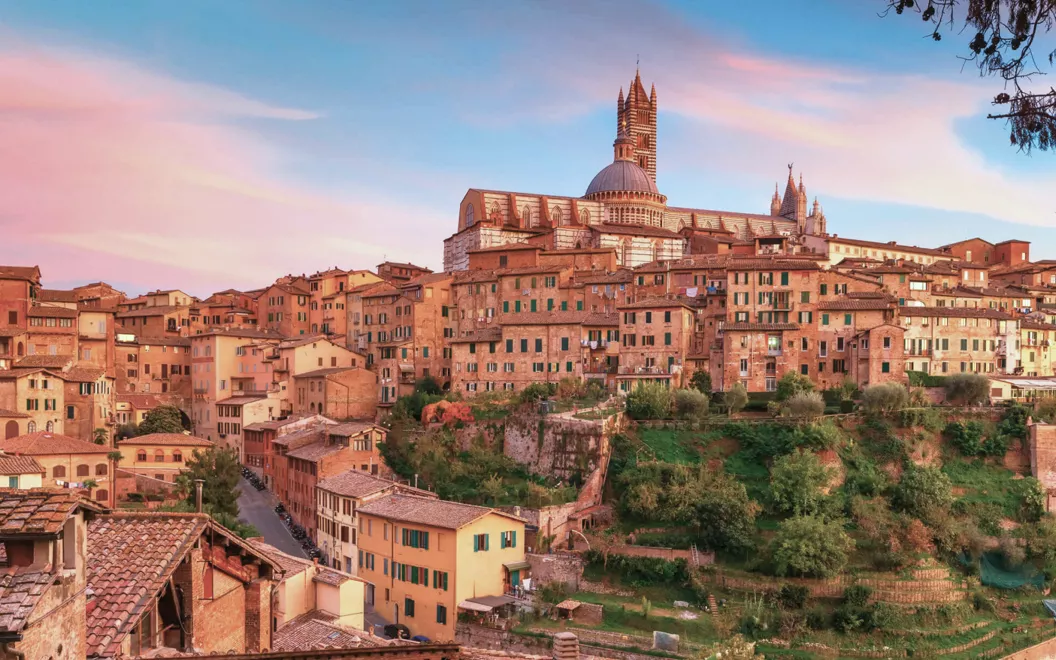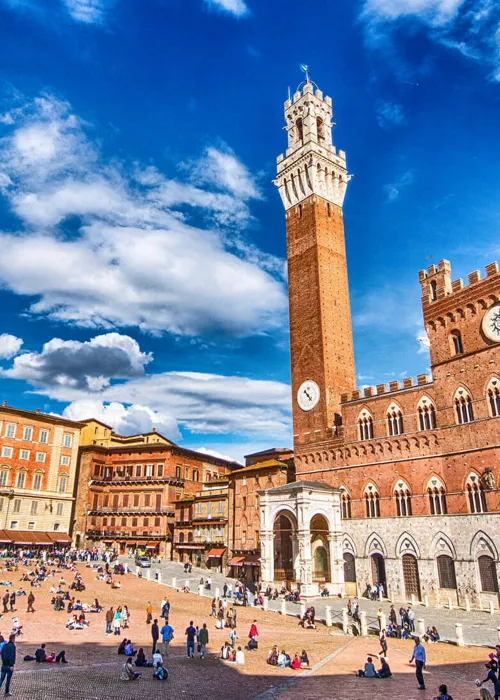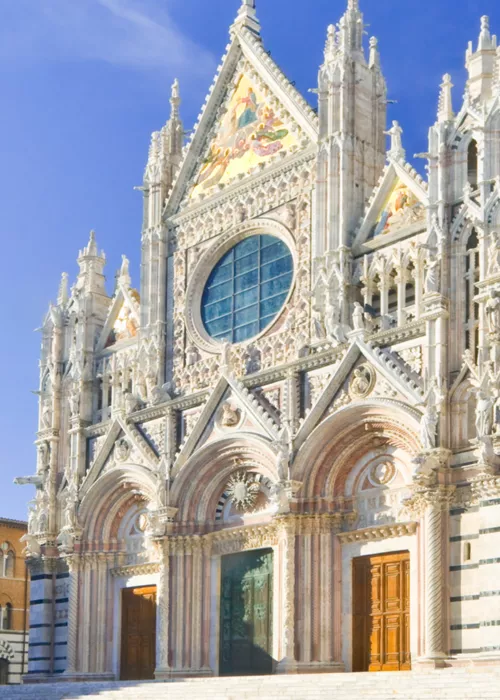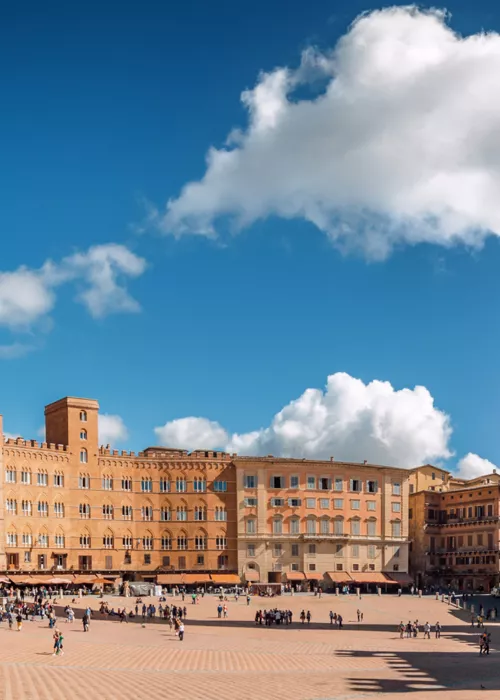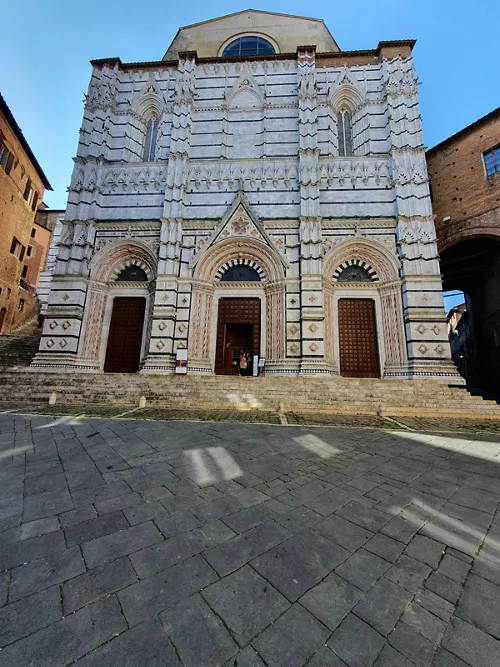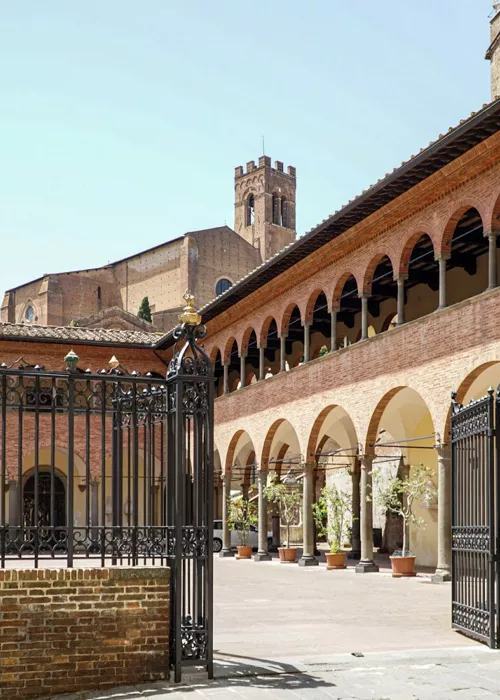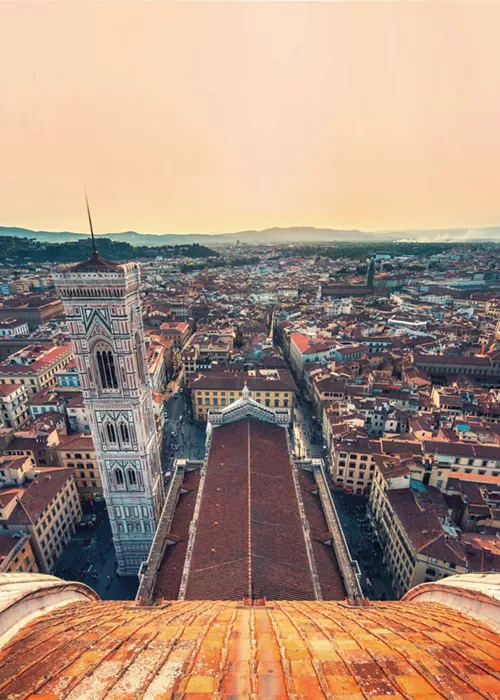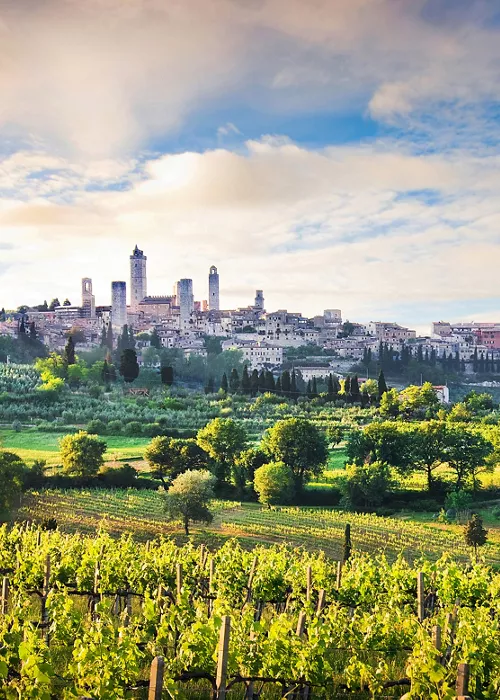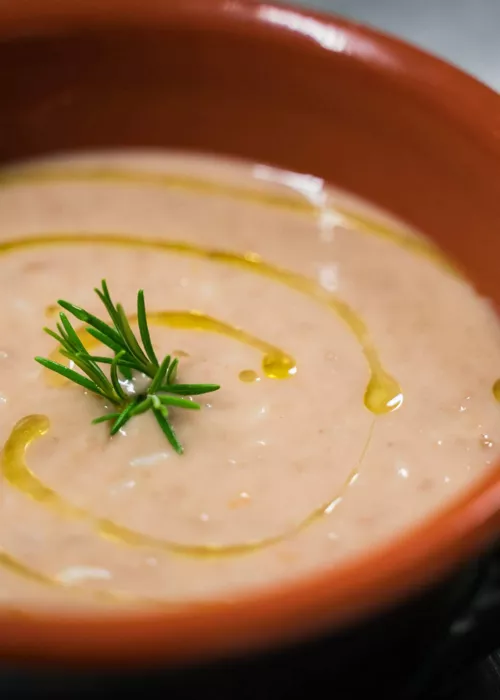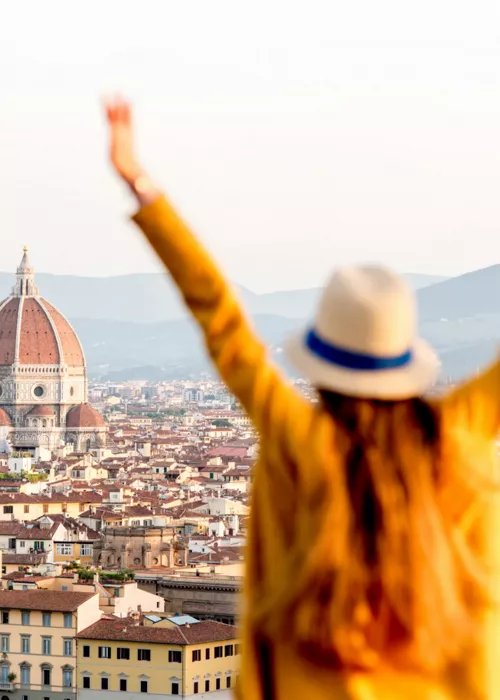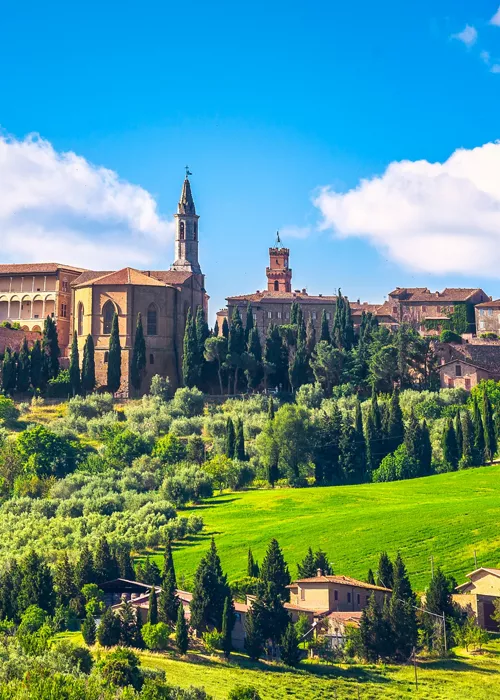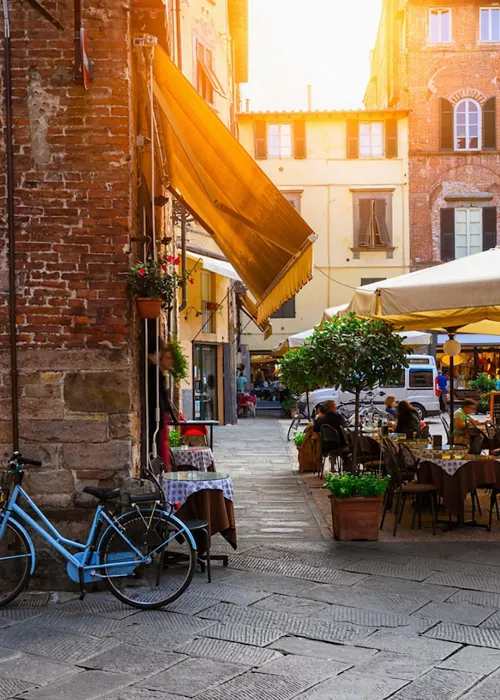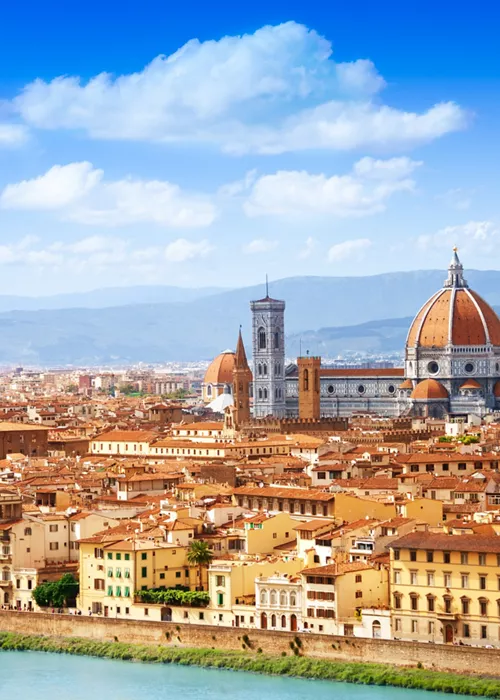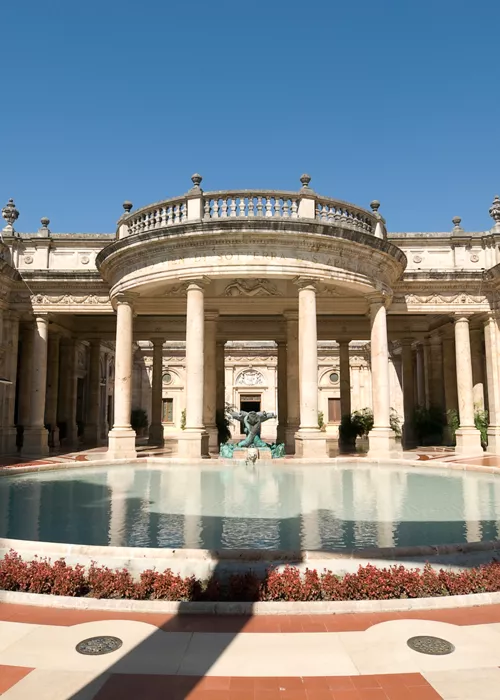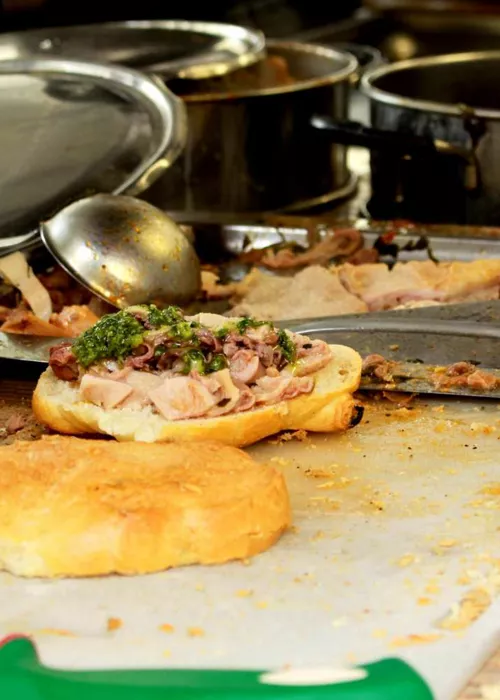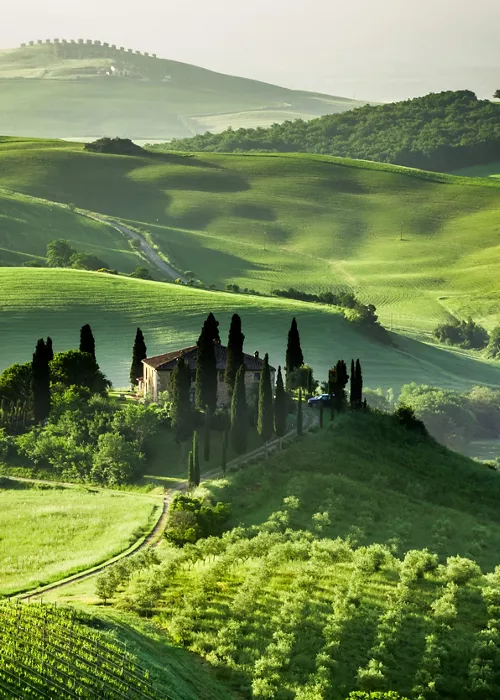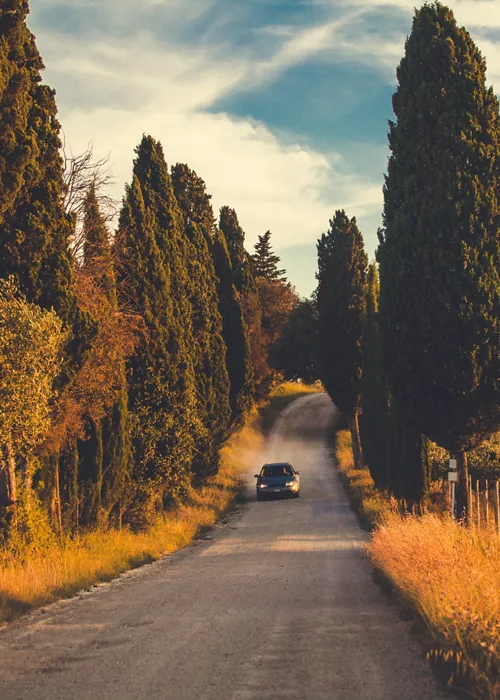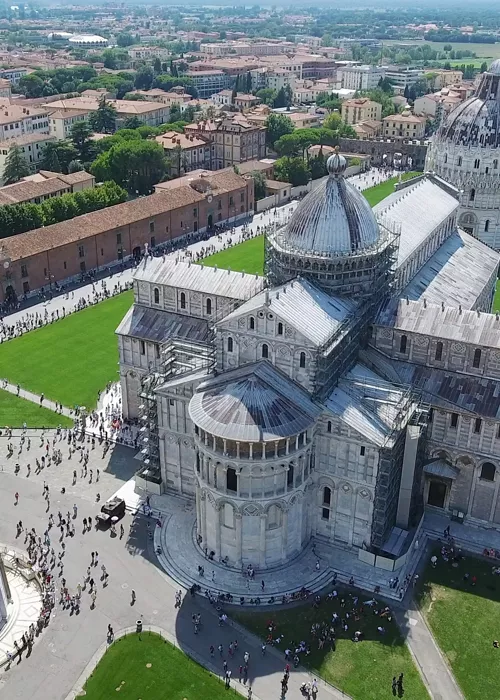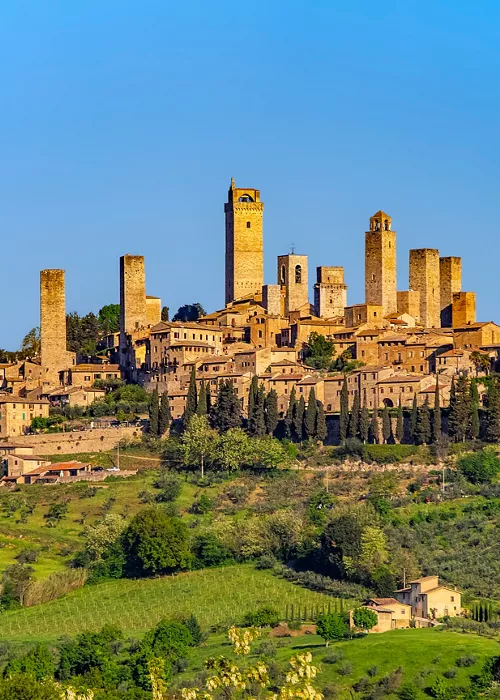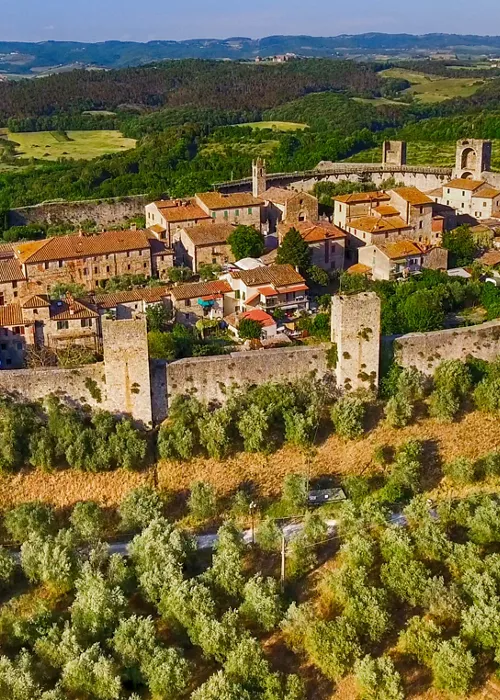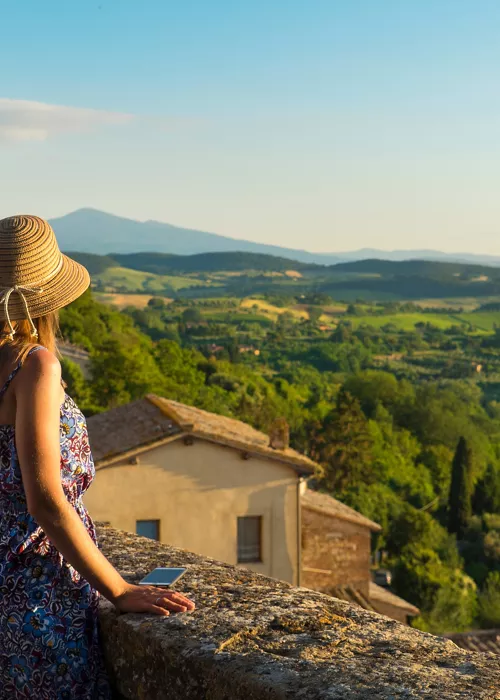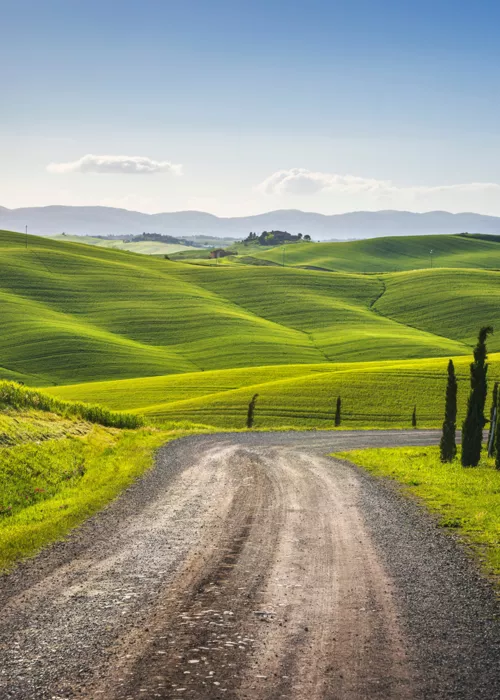Siena and the low-key charm of the historic centre
4 minutes
Siena is tucked away in the Tuscan hills. A cultured city and ideal destination for lovers of good food, Siena is fascinating even from afar.
UNESCO described it as 'a masterpiece of dedication and inventiveness in which buildings were designed to fit into the overall design of the urban structure' and in 1995 placed it on the World Heritage List for skilfully preserved important features of its medieval structure: an old town centre bordered by the ancient ramparts built between the 14th and 16th centuries and a main square, Piazza del Campo, with a jaw-dropping number of monuments and sights.
Particularities and history of Siena
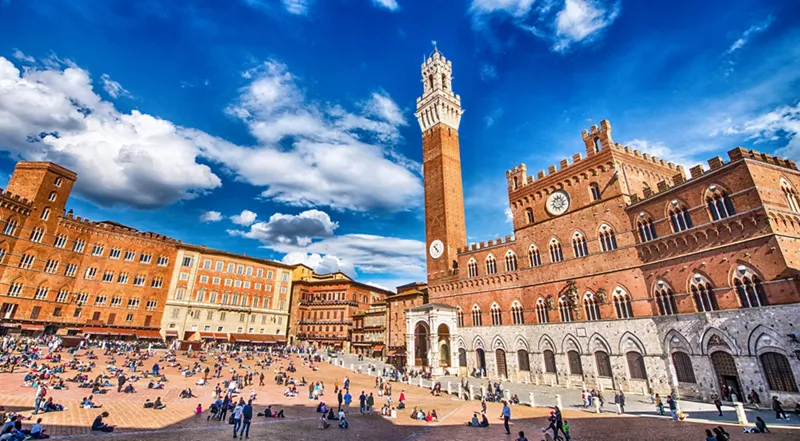
The history of Siena began as a Roman military colony at the time of Emperor Augustus, but it was not until the 10th century that Siena began to acquire great political and economic importance. It was at the centre of important trade routes and it was during the turbulent years of the wars with neighbouring Florence that it experienced its best time. Great artists such as Duccio di Boninsegna, Simone Martini and the Lorenzetti brothers had the opportunity to express their art in the city. In 1240, the University of Siena, one of the oldest universities in the world, was founded with the Schools of Medicine and Law.
The height of its splendour was reached thanks to the Government of the Nine, which came to power in 1287 and remained in power until 1355. During these golden years, construction began on wonderful monuments such as the Duomo, the Palazzo Pubblico and the Torre del Mangia.
The decline of the Republic of Siena began with the plague that killed three-fifths of the population in 1384. Siena's pride has never faded and even today the city is still linked to the historical division into contrade [Medieval city quarters in Italy] within the medieval walls. The 17 contrade have competed every year since 1644, twice a year on 2 July and 16 August, in the iconic Palio of Siena, an equestrian joust of medieval origin that takes place in Piazza del Campo.
What to see in Siena: 10 must-see places
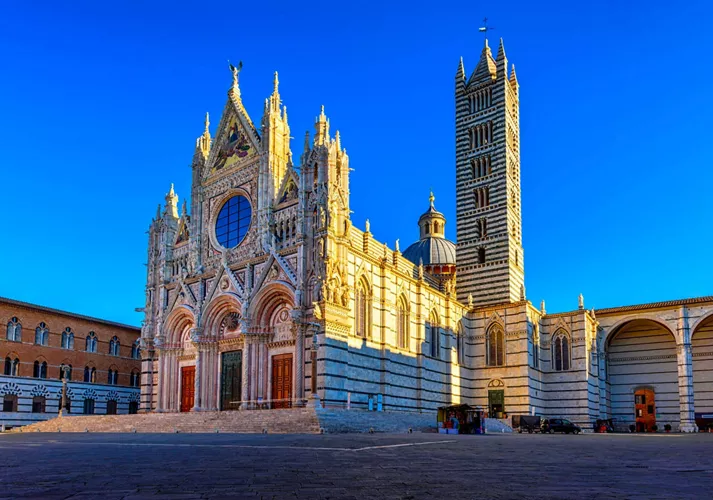
The historic centre of Siena, which has remained intact for centuries, appears today almost as it did in the fourteenth century. The journey to discover the city starts from the beautiful Piazza del Campo surrounded by imposing monuments that will keep you busy for a good few hours.
From the heart of Sienese social life, after taking a few photos with the red colour being enhanced by the sun's rays, start by climbing the Torre del Mangia with its 400 steps, an unmissable vantage point over the square and the rooftops of Siena, and visit the Palazzo Pubblico that houses the Civic Museum with masterpieces such as Simone Martini's Maestà and Ambrogio Lorenzetti's fresco cycle Effects of Good and Bad Government.
Fonte Gaia is the city's first public fountain and deserves a souvenir photo before moving along the city's narrow streets to the monumental complex of Siena Cathedral. One of the finest examples of an Italian Romanesque-Gothic cathedral, the Duomo houses sculptures by Nicola and Giovanni Pisano, Donatello, Michelangelo and Bernini. With just one ticket, you can access the Piccolomini Library and the Gate of Heaven, which has been closed to the public for centuries. And, with a bit of luck, you can also admire the floor of the cathedral, which is only uncovered for a few weeks a year, usually between June-July and August-October.
Take your time to admire every nook and cranny of the cathedral, including a visit to the crypt, and continue on to the nearby Baptistery of San Giovanni down a few steps. With its ogival vaulted naves completely frescoed, the Baptistery is one of the finest examples of 15th-century Sienese painting.
4 ideas on what to do in Siena
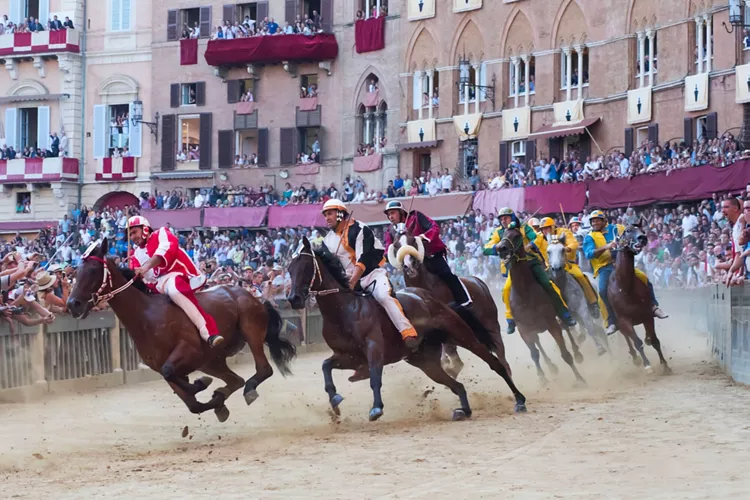
Necessary introduction: every corner of Siena hides treasures and glimpses to be photographed. If you are in the centre, behind Piazza del Campo is another example of the Sienese style, the Loggia of Mercanzia, a Gothic-Renaissance work consisting of a wide open loggia with three high arches on pillars with rich capitals.
From this monument, which testifies to the mercantile power of medieval Siena, you can walk to the Sanctuary of Santa Caterina, which incorporates the former home of the Benincasa family, the birthplace of Saint Catherine. The three-storey sanctuary is divided into various porticoes, loggias and churches from various eras. Particularly impressive is the Church of the Crucifix, built in the early 1600s to house the Crucifix from which Catherine received the stigmata in 1375.
Art lovers should not miss the Museo dell'Opera, one of the oldest private museums in Italy, located behind the Duomo. Founded in 1869, the museum houses two masterpieces by Duccio di Boninsegna: the Maestà altarpiece and the polychrome stained-glass window created for the apse of the cathedral.
What to eat in Siena? 6 specialities for every taste
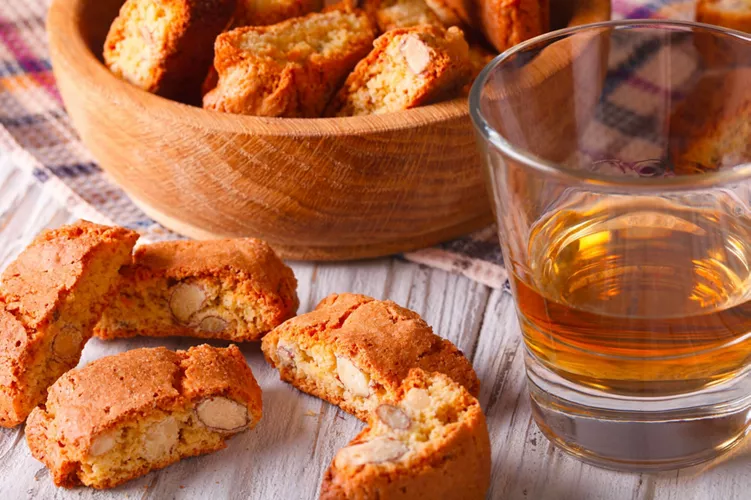
Strolling through the red streets of Siena, you will be attracted by the inviting smells of Sienese cuisine, which has its roots in the past and is based on genuine products such as vegetables, pulses and meat.
Make yourself comfortable and let yourself be overwhelmed by the rich platters of local cured meats and cheeses such as capocollo, finocchiona and Pecorino di Pienza.
For a richer meal, you can play it safe with pici pasta with wild boar ragout served in every restaurant and trattoria in Siena. Vegetarians can choose the pici pasta with cacio e pepe or try the gnudi, delicious ricotta, spinach and Parmesan cheese balls seasoned with butter and sage.
Sienese cuisine is also rich in sweets such as panforte di Siena, which dates back to the 13th century and can be found in any café and pastry shop in the city. Cavallucci are tasty biscuits with walnuts and candied fruit, but if you love almonds, you might want to try ricciarelli of Siena, oval-shaped sweets made of almond paste enriched with vanilla and candied fruit.

